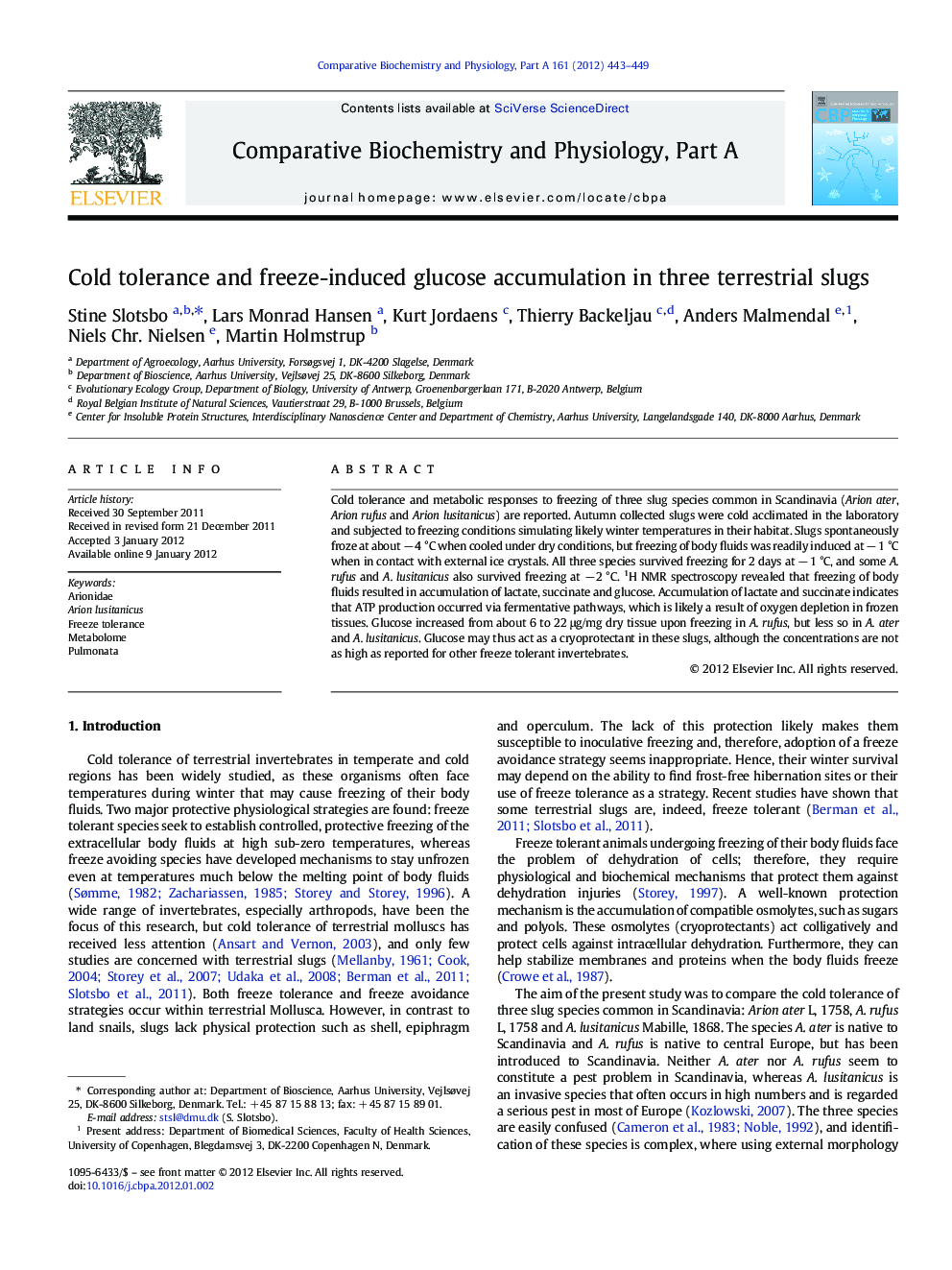| Article ID | Journal | Published Year | Pages | File Type |
|---|---|---|---|---|
| 1972298 | Comparative Biochemistry and Physiology Part A: Molecular & Integrative Physiology | 2012 | 7 Pages |
Cold tolerance and metabolic responses to freezing of three slug species common in Scandinavia (Arion ater, Arion rufus and Arion lusitanicus) are reported. Autumn collected slugs were cold acclimated in the laboratory and subjected to freezing conditions simulating likely winter temperatures in their habitat. Slugs spontaneously froze at about − 4 °C when cooled under dry conditions, but freezing of body fluids was readily induced at − 1 °C when in contact with external ice crystals. All three species survived freezing for 2 days at − 1 °C, and some A. rufus and A. lusitanicus also survived freezing at − 2 °C. 1H NMR spectroscopy revealed that freezing of body fluids resulted in accumulation of lactate, succinate and glucose. Accumulation of lactate and succinate indicates that ATP production occurred via fermentative pathways, which is likely a result of oxygen depletion in frozen tissues. Glucose increased from about 6 to 22 μg/mg dry tissue upon freezing in A. rufus, but less so in A. ater and A. lusitanicus. Glucose may thus act as a cryoprotectant in these slugs, although the concentrations are not as high as reported for other freeze tolerant invertebrates.
